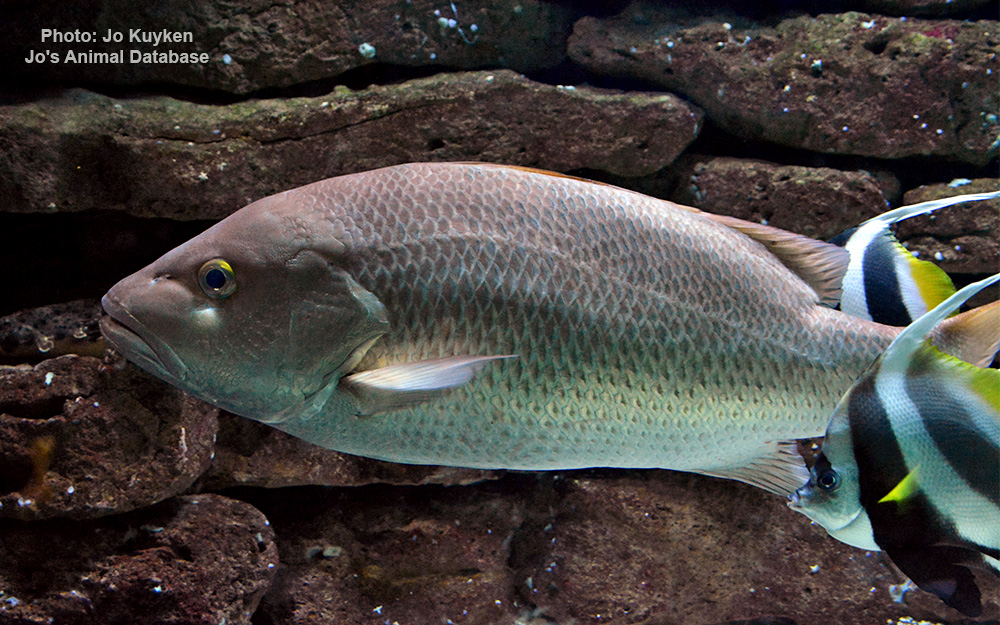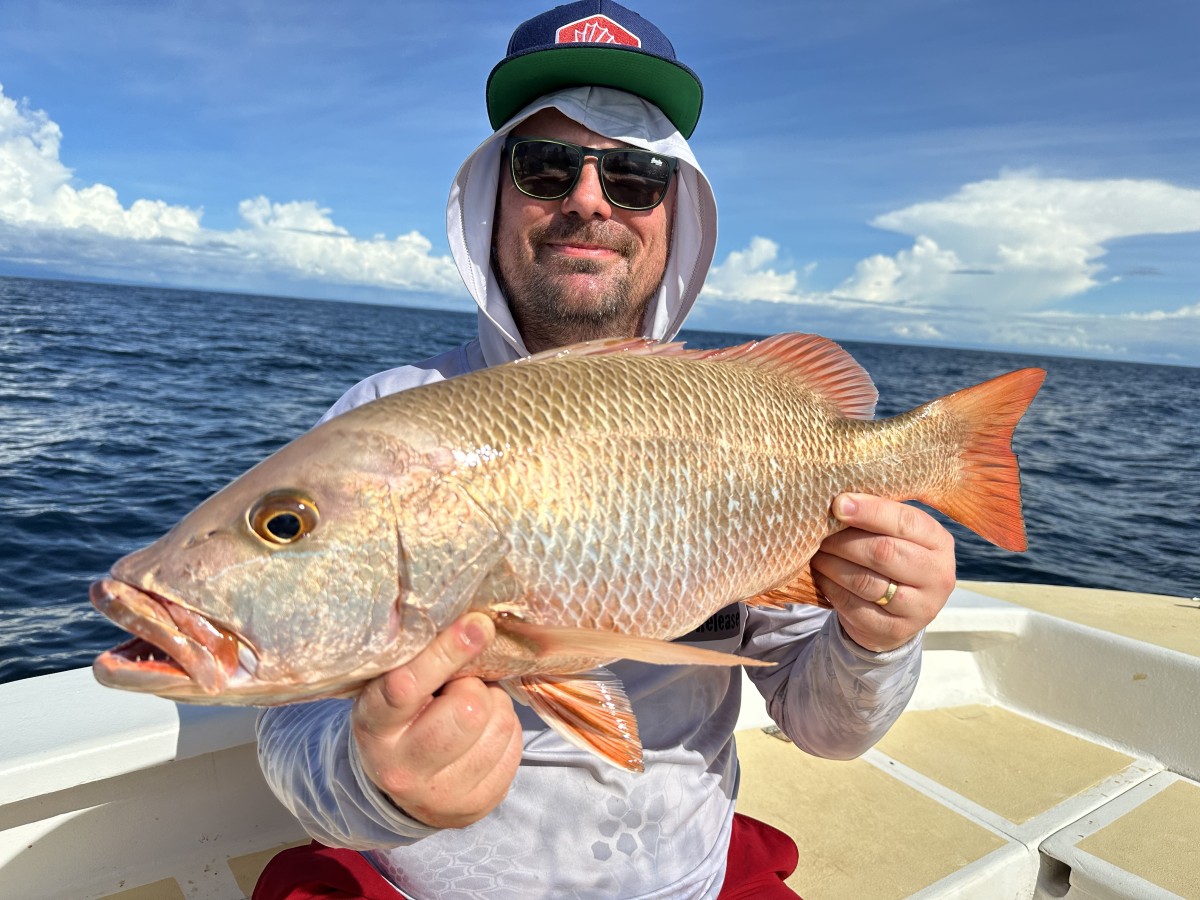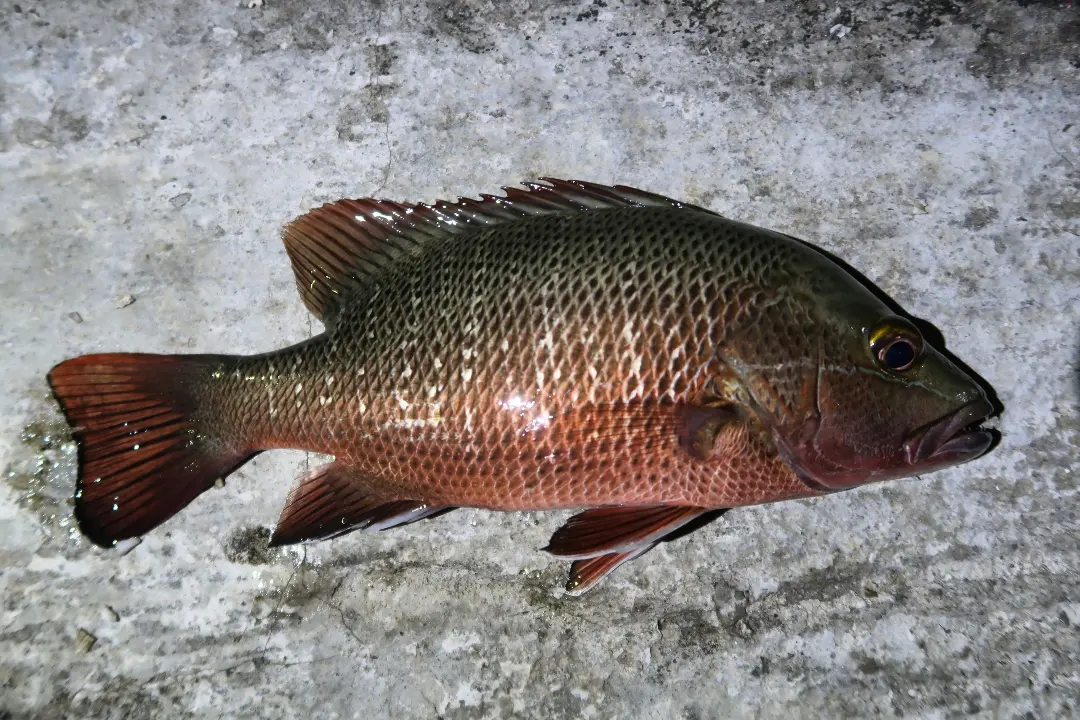Mangrove red snapper
(Lutjanus argentimaculatus)

Image source: Jo's Animal Database
Classification
General data
The mangrove red snapper (Lutjanus argentimaculatus), also known as mangrove jack, grey snapper, creek red bream, Stuart evader, dog bream, purple sea perch, red bream, red perch, red reef bream, river roman, or rock barramundi, is a species of marine ray-finned fish, a snapper belonging to the family Lutjanidae. It has a wide Indo-Pacific range and has recently been recorded in the eastern Mediterranean Sea.
Coloration of the mangrove red snapper ranges from burnt orange, to copper, to bronze and dark reddish-brown, depending on its age and environment. Younger fish caught in estuarine areas are often darker than older fish taken from offshore reef areas,[4] and exhibit lighter vertical bands down their flanks.
Like other tropical snappers (family Lutjanidae), mangrove jacks have prominent canine teeth in their jaws that are used for seizing and holding prey. These teeth can cause a nasty injury to unwary fishers.
In reef areas, mangrove red snappers are sometimes confused with two-spot red snapper or red bass (Lutjanus bohar), a known carrier of ciguatera toxin. The red bass, however, is usually darker in coloration, has fewer dorsal-fin spines, scale rows on the back that rise obliquely from the lateral line, and a deep groove from the nostrils to the eyes.
The mangrove red snapper is native to the Indian Ocean and the western Pacific Ocean from the African coast to Samoa and the Line Islands and from the Ryukyus in the north to Australia in the south. It has also been rarely recorded in the Mediterranean Sea, having reached there from the Red Sea since 1979.
As its name implies, the mangrove red snapper is commonly found in mangrove-lined estuarine systems, however some make their way into complete freshwater systems, particularly at a juvenile age. They migrate to offshore reefs to spawn. As they mature, mangrove red snappers move into open waters, sometimes hundreds of kilometers from the coast to breed. These larger fish are sometimes caught by bottom-fishers with heavy tackle, though they remain difficult to land due to their speed and proximity to sharp reef bottoms.












